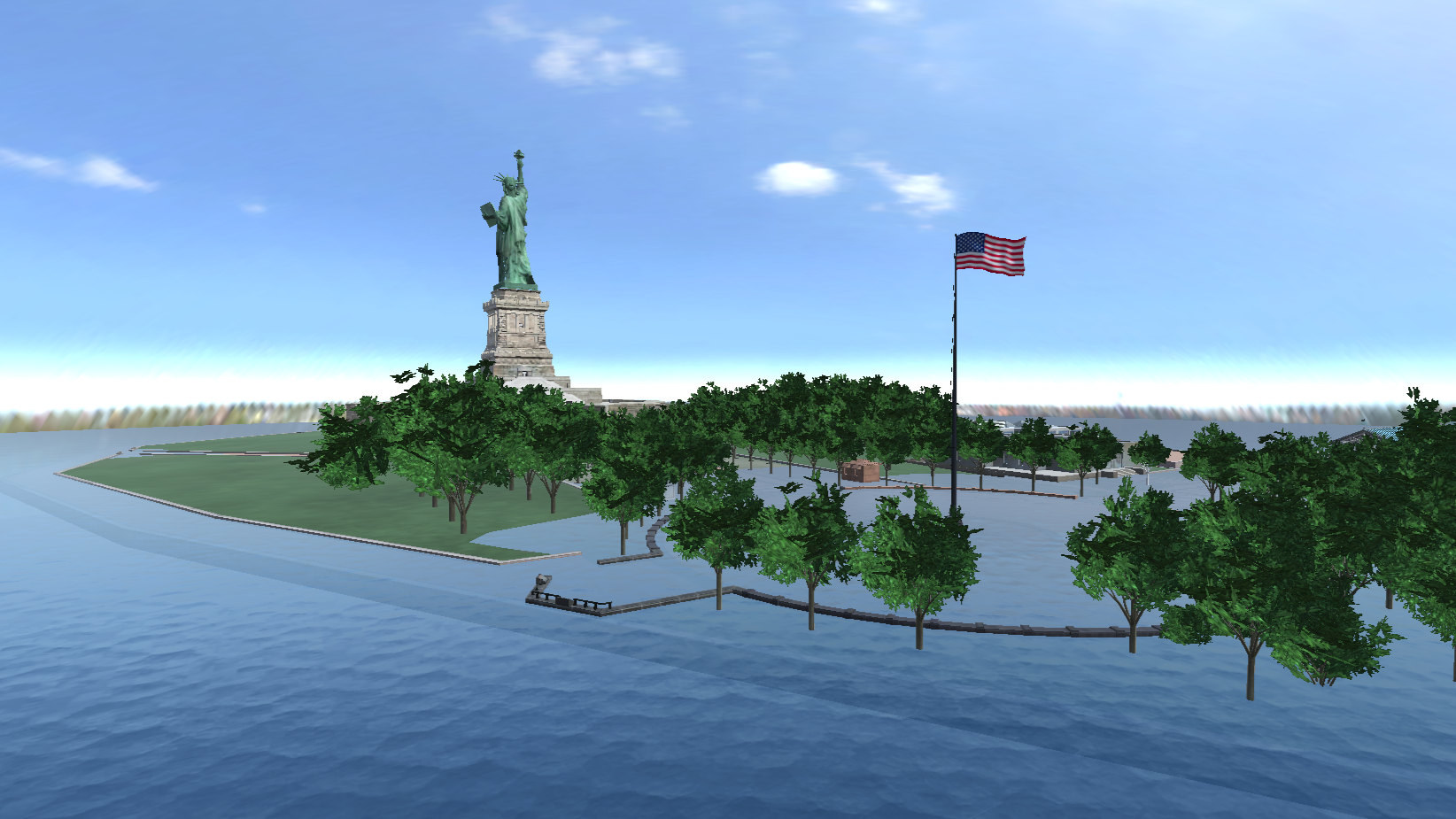Envision Center collaboration helps students visualize effects of climate change
It’s one thing to hear statistics about how climate change and resulting sea level rise will impact our world, and it’s another thing entirely to step into an immersive virtual reality environment that lets you visualize those effects. That’s the principle behind a collaboration between Hua Cai, the Thomas and Jane Schmidt Rising Star Associate Professor in the Edwardson School of Industrial Engineering and the School of Sustainability Engineering and Environmental Engineering, and the Rosen Center for Advanced Computing (RCAC)’s Envision Center.
Cai, who teaches undergraduate courses on the topic of engineering environmental sustainability and discusses how food, water, and energy choices could impact climate change, found that the concepts were too abstract for many of her students.
“One thing I noticed while teaching this course is that it’s hard to have a tangible idea of what the numbers mean,” says Cai. “The students can calculate the amount of greenhouse gas emissions that are going to result from certain choices, but understanding how that is going to impact a city can be a challenge.”
With funding from the Purdue Innovation Hub, she and her Ph.D. student Kendrick Hardaway worked with the Envision Center to build a virtual reality environment to help students visualize the impacts of climate change and the consequences of various choices.
They picked two cities – New York City and Venice, Italy, both coastal cities that will be more impacted than many places by rising sea levels – and developed a VR application that will allow a student to make choices about food, water, and energy and immediately see the impact of those choices on the city over the next 30-50 years.

Cai says she got very positive feedback from the students who were among the first to use the application in her classes last spring.
Says one student, “I feel very motivated [to take action about sustainability] after this experience. It was scary to see the sea levels rising right before my eyes. It was almost a wake-up call showing what our future could look like.” Adds another, “Telling someone that their lifestyle will raise sea levels by a foot vs seeing the sea level rise, [the latter] will have a much bigger impact.”
“I think the project achieved the intended objective to help breach the spatial and temporal distance from our individual decisions today to long term consequences that will happen many years later in places that may not be familiar to the students,” says Cai, who adds that she’s received inquiries from other professors teaching sustainability courses and is working with the Envision Center to find a way to expand the use of this application beyond her own classes.
To learn more about the Envision Center and see examples of recent projects, visit the Center’s website. For more information about working with the Envision Center, contact envision@purdue.edu.
